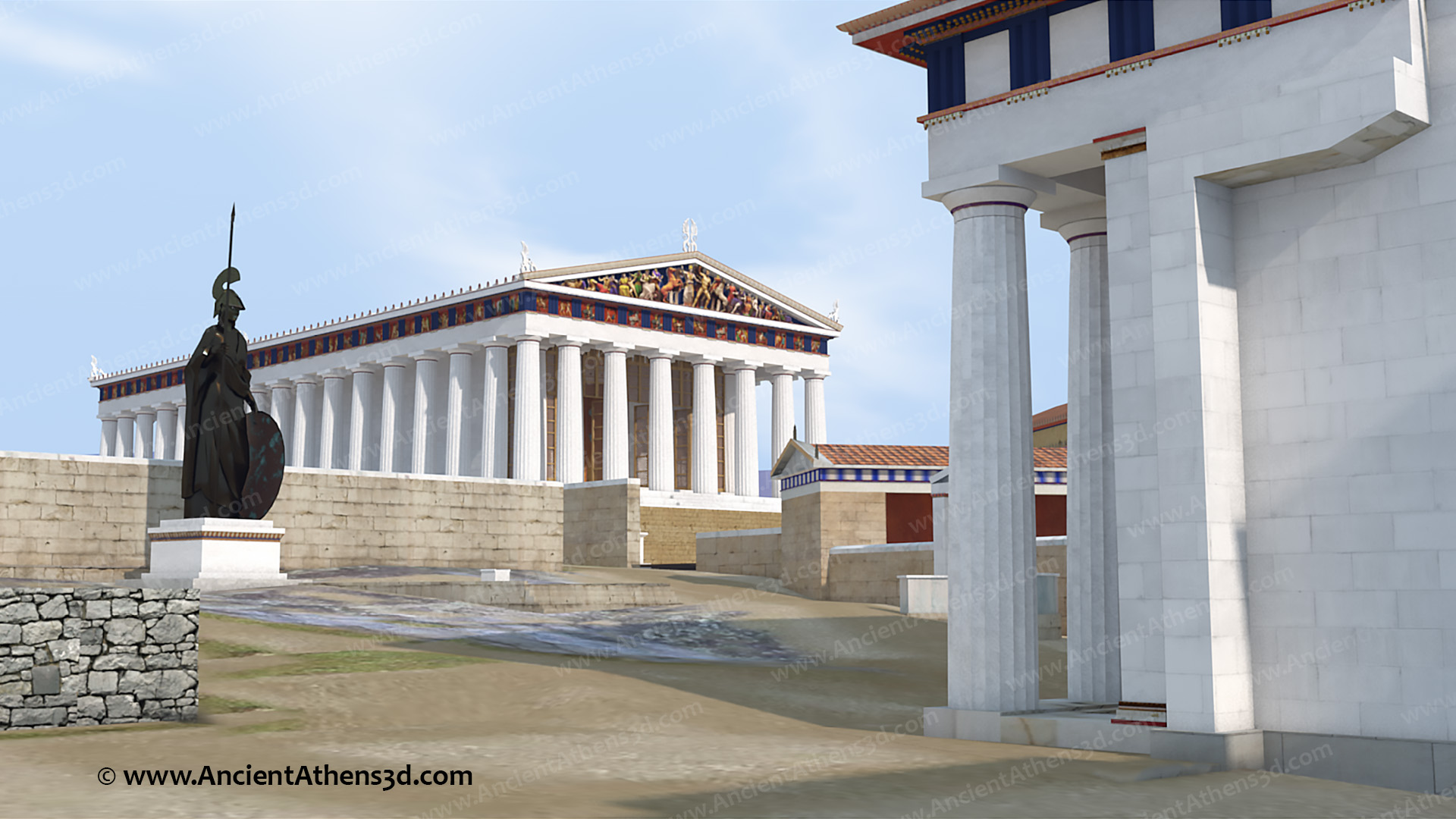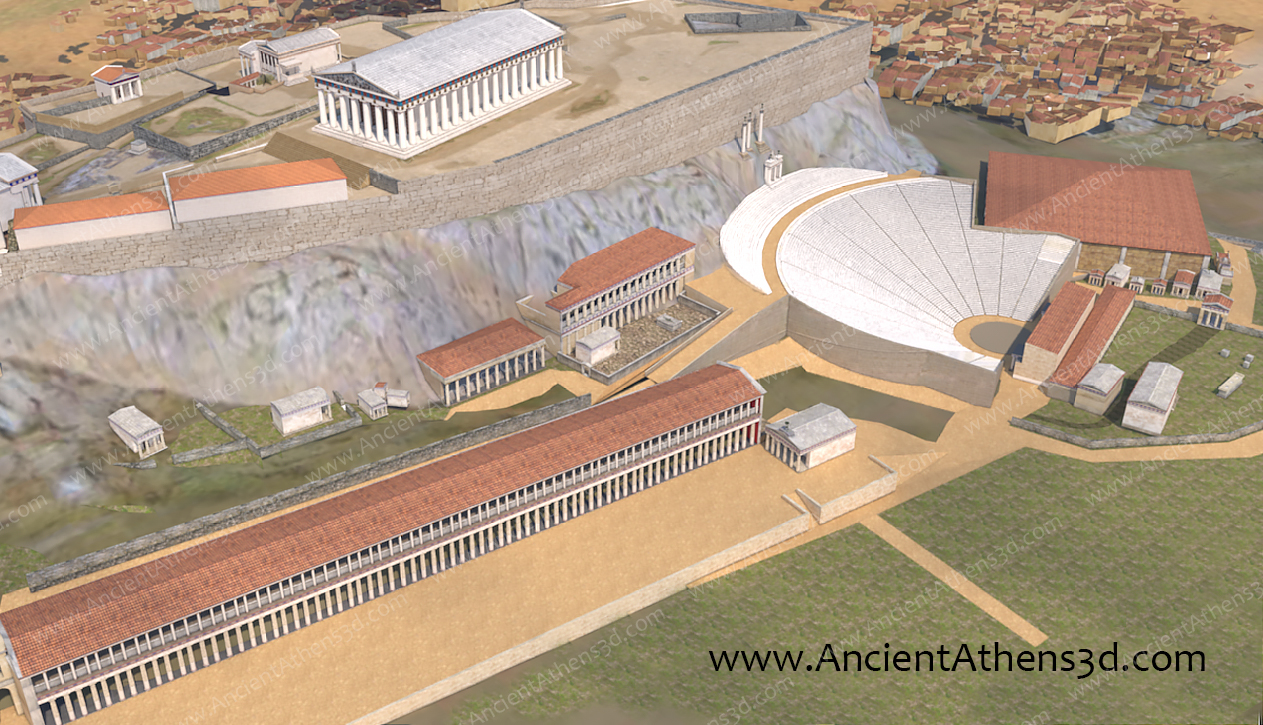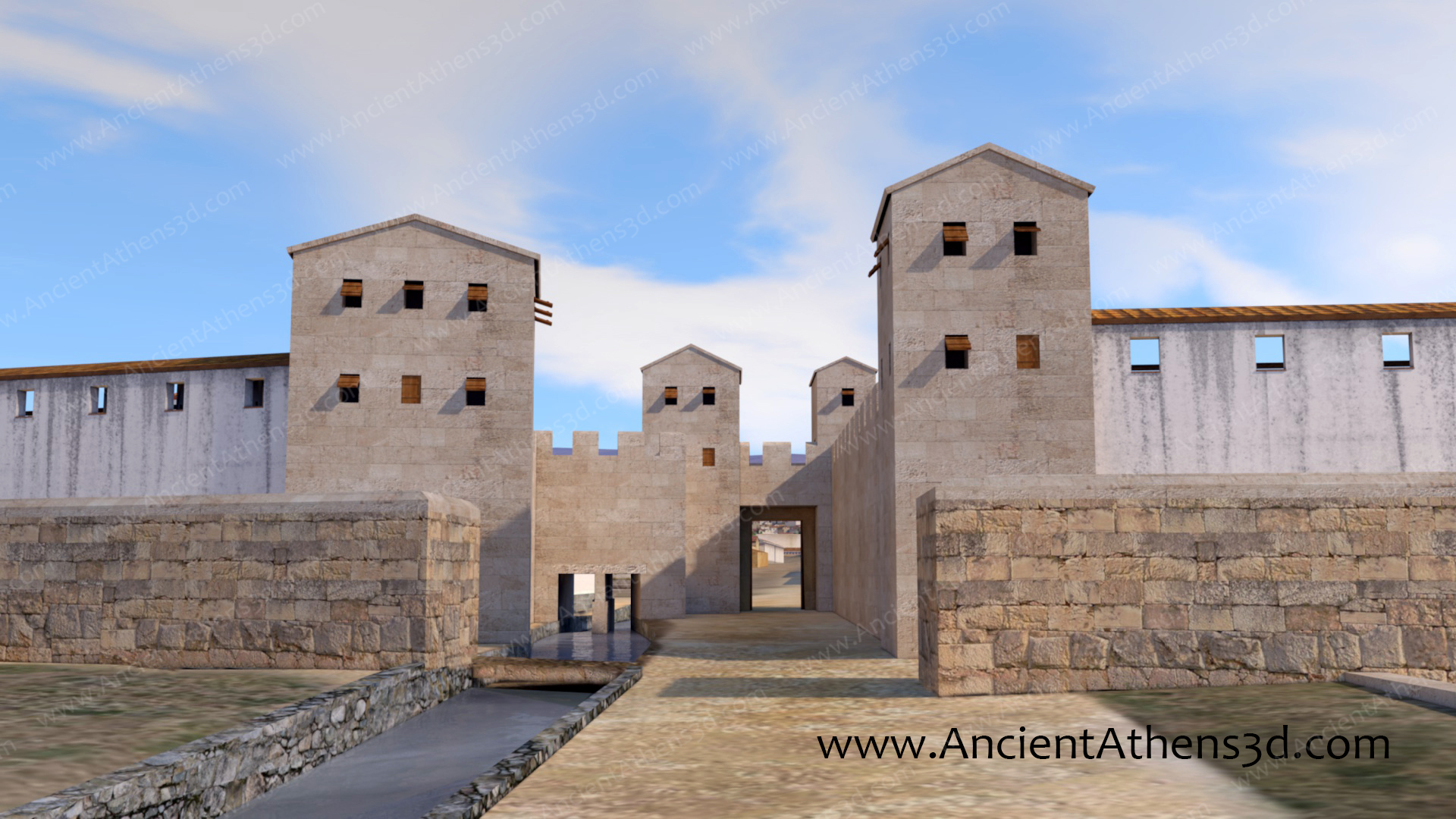Pericles began the construction of new monuments on the Acropolis, the most important of which, the Parthenon. When the temple was completed in 438 BC, the treasury of the Athenian League was transferred from the island of Delos to the temple itself, making the dominative tenses of Athens rather obvious. New buildings were built in the Agora. The most important were the Tholos (the dinning room of the elected Deputies), the new Bouleuterion (Parliament House) and the Temple of Hephaestus (Thesseion) which is the best preserved ancient Greek temple. In the south slope of the Acropolis, the Theatre of Dionysus was constructed and became the first Theatre in the world’s history. It was in this theatre that Aeschylus, Euripides and Sophocles “taught” their tragedies and Aristophanes his comedies.
The prosperity of Athens, the Golden Age, wouldn’t last for long. Soon everything would come to a stop, as the Peloponnesian War begun (431 BC), which ended with the crushing defeat of Athens (404 BC).




